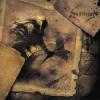There are 3 common accuracy/dodge mechanics i often see in games, electronic, tabletop, or otherwise.
1. The simplest to understand from a laymans perspective:
Accuracy/Dodge %.
The percent chance to hit is equal to accuracy %. You roll a 'random' and then you either hit, or you miss.
Dodge is usually factored into this.The net/total accuracy is equal to a factor of base accuracy and target's dodge.
this can be either a sum: "90A - 10D = 80% chance" or a multiplication: "90A * 0.9(dodge coefficient is 10%) = 81% chance to hit."
In both instances there can be an issue of scaling. As in 0% chance to hit, ever. As in "my dodge chance is 100% so no matter how accurate you are you will never hit me". or "my accuracy is over 100% so no matter your dodge i will always hit you". Many games get around this by setting limits. But this limits player customizeation and specialization. IE. *i wanted a character really good at dodging, but the game limits my build". The limit can be a form of "maximum dodge % is 90%" or "there is always a minimum of 10% chance to hit, or 1% chance to dodge". In my experience, the latter is more enjoyable limit. Even assuming that you do not implement a limit, the limit is implicit, and will always be *anyone with more than X accuracy over you will always hit, and anyone with X dodge over you will always dodge*
An example of which is *critical hit/critical miss* rolls in a game, where even if you would normally have 0% chance to hit, if you score a critical hit, you are guaranteed to hit.
2. Simple to implement, but a little less user-friendly: DND style AC/to-hit.
Whether or not this system is easy for players to understand or not depends on the player.
How DnD handles armor, and accuracy, is You have a number that represents your ability to avoid being hit and taking damage: AC
This number is compared against the attacker's "to-hit" number, and a dice roll. Usually the attacker has a base to-hit, and then a random factor to it.
If your attacker has a base to-hit of 10, and you have an ac of 15, the attacker needs to roll a 5 or more in order to hit you. DnD uses a 20 sided die, and so increments in amounts of 5%. This means that if the attacker rolls between 1 and 5, they will *miss*, and if they roll between 5 and 20, they will *hit*. 1 being an automatic miss, 20 being grounds for a critical hit. In this system, it scales linearly. If your AC is equal or greater than 20 points higher than the attackers base-to-hit, they will miss 95% of the time. Any AC *above* this number is redundant. And on the contrary, any base to-hit above your target's AC, is redundant, as you will always hit anyways.
This system allows for reasonably fair linear scaling in a way that you do not become invincible, and higher stat characters have an advantage over lower ones, but they are still susceptable to being injured by higher-level enemies.
3. Infinitely Scaling Accuracy/Dodge.
In this system, your *chance to hit* is your "accuracy" divided by the target's dodge. (A/D) = H%
This system is intuitive, scaleable, and simple to implement. In this situation, if your accuracy is equal to or more than your target's dodge, you have a 100% chance to hit them. The higher your dodge is, the less likely you are to become hit, but unless the enemies accuracy is zero, there will *always* be a chance for them to hit, however small. If you have 40 dodge, and the attacker has 10 accuracy, they have a 25% chance to hit. If you have 100000 dodge, and they have a meager 1 accuracy, they still have a 1 in 100 thousand chance to hit you.
The problem with this design is that if an enemy has a high enough accuracy, they will *always* be able to hit you, and your dodge ability will be worthless. To remedy this a good method is to use a hybrid system with one or more of the above, or a critical hit/fail for dodging and hitting. My personal favourite is:
A/D = H% WITH A MIN and MAX OF: "0% + 1/(D-A)" and "100% - 1/(A-D)" (i think?)
so that even if you have 10000 dodge, and your enemy has 10000 accuracy, your investment into dodge is not wasted, and increasing your dodge / accuracy never becomes redundant, there are just diminishing returns.
The formulas i've provided are probably inefficient or nonsimplified etc. I know that, im just too lazy and my brain is too tired to fix it.






